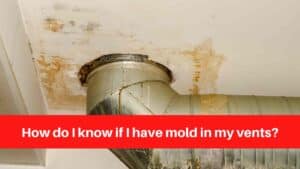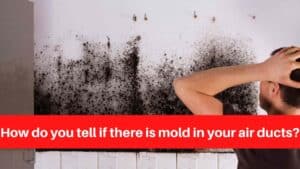Mold Exposure: How to Recognize Symptoms and Protect Your Health
Mold exposure is a serious health risk that should not be taken lightly. Mold can cause a variety of health issues, including respiratory issues, skin irritation, and even neurological damage.
Mold exposure can occur both indoors and outdoors. Indoor mold exposure is more common because mold thrives in moist, dark environments. Mold can be found outside in soil, on rotting vegetation, or on any surface that is constantly moist.
It can be found both indoors and outdoors, and it often goes undetected until it causes problems. Mold exposure can occur through inhalation, skin contact, or ingestion. Coughing, postnasal drip, sneezing, dry or scaly skin, itchy eyes, nose, or throat, and nasal congestion are the most common mold exposure symptoms. If you suspect you have been exposed to mold, you should see a doctor as soon as possible for a diagnosis and treatment.
There are a few things you can do to protect yourself from mold exposure. First, try to keep your home as clean and dry as possible. Mold will find it more difficult to grow indoors as a result of this. Second, if you must go outside during periods of high moisture (such as after a rainstorm), wear protective clothing, such as a dust mask or gloves. Finally, if you believe you have been exposed to mold, wash your clothes and shower right away to avoid spreading the spores throughout your home.
How common is Mold Exposure?
Mold exposure is more common than many people realize, and it can have serious health consequences. Mold spores can enter your body through your nose, mouth, or skin. Mold spores can cause allergic reactions, respiratory problems, and other health problems once they enter your body.
Mold exposure is most common in people who have a weakened immune system or are regularly exposed to large amounts of mold spores. Mold exposure is also more dangerous for people who have chronic lung diseases such as asthma or emphysema. If you believe you have been exposed to mold, you should see a doctor as soon as possible so that you can be treated and avoid further health complications.
Mold Exposure Dangers
Mold exposure can cause a variety of health problems, including respiratory infections, allergic reactions, and even depression. Mold exposure can also aggravate pre-existing conditions such as asthma and other respiratory disorders. Mold exposure can even be fatal in some cases. If you suspect that you or someone you know has been exposed to mold, you should seek medical attention right away.
Mold Prevention Tips for Your Home
If you suspect that you have a mold problem in your home, the first step is to determine the source of the moisture. Mold can grow on any wet or damp surface, so keep your home dry. You can do so by:
– repairing leaks and other sources of water intrusion
– Using a dehumidifier to reduce indoor humidity levels
– ventilating damp areas such as bathrooms and laundry rooms
– drying wet materials and surfaces as soon as possible
In addition to reducing moisture, you can prevent mold growth by regularly cleaning and disinfecting surfaces in your home. This is especially important in areas where mold is likely to grow, such as kitchens and bathrooms. To kill mold spores on hard surfaces, use a mild bleach solution (1 cup bleach per gallon of water). Commercial mold cleaners can also be used, but make sure to carefully follow the instructions.
If you have a mold problem in your home, you must act quickly. Mold exposure can cause a variety of health issues, including respiratory issues, headaches, skin irritation, and fatigue. Mold exposure can cause serious illnesses such as allergic reactions or infections in some cases. If you suspect you have a mold problem in your home, contact a qualified professional for an inspection and assessment.







